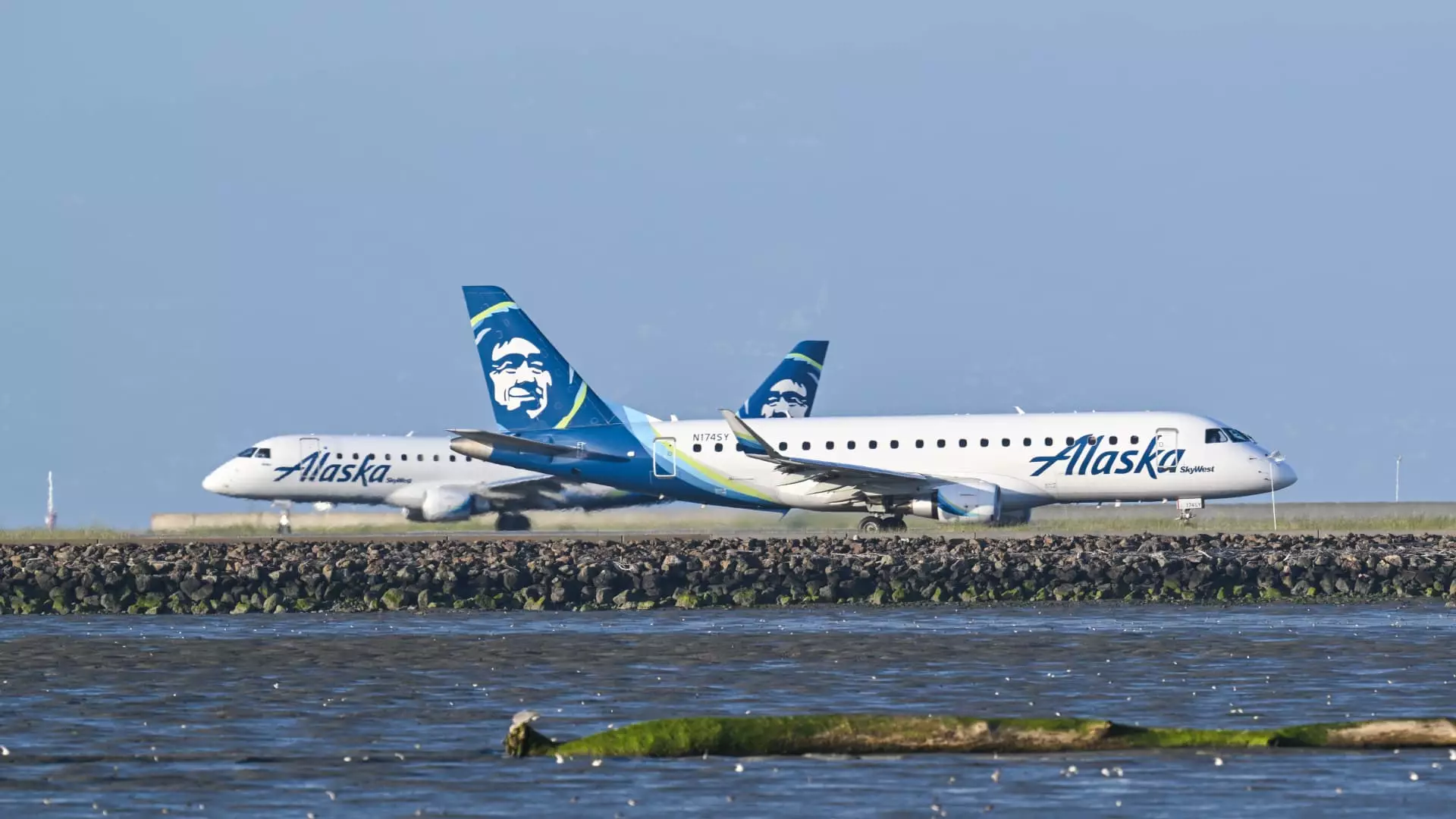Alaska Air Group is setting a high benchmark for profitability, aiming for an impressive $1 billion increase by 2027. This ambitious goal comes at a time when the airline industry is witnessing a paradigm shift toward high-end travel. The company recognizes the rising demand from affluent travelers and is strategically positioning itself to leverage this trend. By expanding its service offerings and implementing innovative revenue-generating strategies, Alaska intends to carve out a more significant market share in both domestic and international arenas.
One of the most significant steps in Alaska’s growth strategy is its acquisition of Hawaiian Airlines, finalized at a substantial $1.9 billion. This merger not only enhances Alaska’s operational capacity with wide-body aircraft like the Boeing 787 Dreamliner, but it also grants access to lucrative routes across the Pacific. Although both airlines will maintain their distinct brands for the time being, this partnership sets the stage for future synergy that could yield substantial dividends in terms of route expansion and customer engagement.
Beginning in May, Alaska will launch direct flights from Seattle-Tacoma International Airport to Tokyo’s Narita International Airport using Hawaiian’s Airbus A330-200s, followed by a new route to Incheon International Airport in South Korea set to commence in October. This decision to strategically introduce new international routes underscores Alaska’s commitment to enhancing its global footprint by 2030, with plans to operate flights to over a dozen international destinations.
In light of its aggressive expansion, Alaska has forecasted pretax margins between 11% and 13% by 2027, which correlates with projected earnings of over $10 per share. The estimation for 2024 earnings is also promising, projected to be between $3.50 and $4.50 per share, including contributions from Hawaiian Airlines. Alaska’s robust performance reflects its dominant presence in Seattle, where it holds a commanding 55% market share—far exceeding rivals like Delta Air Lines, which retains a 24% share.
However, despite Alaska’s substantial domestic dominance, Delta has asserted itself in international markets. This imbalance emphasizes the need for Alaska to fortify its international segments through strategic route enhancements and partnerships, ensuring that it not only meets demand but can also compete effectively with well-established carriers.
A notable facet of Alaska’s strategy is its foray into the premium services market. With its new partnership with Bank of America to launch a premium credit card, the airline aims to create revenue streams from customers beyond traditional flight revenue. This card is positioned as a sophisticated financial product that aligns with the preferences of high-spending travelers.
Additionally, Alaska recognizes a surge in demand for premium seating options across its fleet. Chief Financial Officer Shane Tackett has acknowledged that there is a significant shift toward customers paying for first-class seats rather than relying on complimentary upgrades. Investing in comfortable and spacious seating will not only elevate the travel experience but could also serve as a strong differentiation factor amongst competitors.
As travel trends evolve, Alaska’s proactive response allows it to cater to changing consumer preferences effectively. The forthcoming enhancement to premium product offerings, especially on the newly acquired Hawaiian A330s, serves as a testament to the airline’s commitment to delivering enhanced comfort and service standards, effectively tapping into the lucrative premium travel segment.
Despite these positive strides, Alaska faces challenges relating to aircraft deliveries from Boeing. Recent quality control issues, including a notable incident involving a Boeing 737 Max 9, have illuminated the importance of product reliability for airline operations. The company’s focus on quality over quantity reflects a strategic choice to prioritize safety and operational efficiency.
Tackett emphasized that while Boeing is making progress in resolving these quality concerns, it is imperative for Alaska to remain vigilant. In a competitive landscape where service reliability is paramount, Alaska’s leadership must ensure that it communicates its expectations clearly to Boeing as the latter addresses delivery delays and production insights stemming from recent challenges, including a major strike that affected output.
Alaska Air Group’s ambitious pursuit of a $1 billion profit increase through innovative strategies and acquisitions signals a robust commitment to its growth objectives. By leveraging high-end travel trends and reinforcing its operational framework, particularly in international markets, Alaska is strategically aligned to enhance its competitive edge. Nevertheless, the airline must deftly navigate the complexities that come with aircraft supply issues while remaining attuned to evolving passenger expectations in an ever-changing travel landscape. As Alaska sets its sights on the horizon, its continued adaptation and strategic foresight will be critical in determining the success of its growth trajectory.

